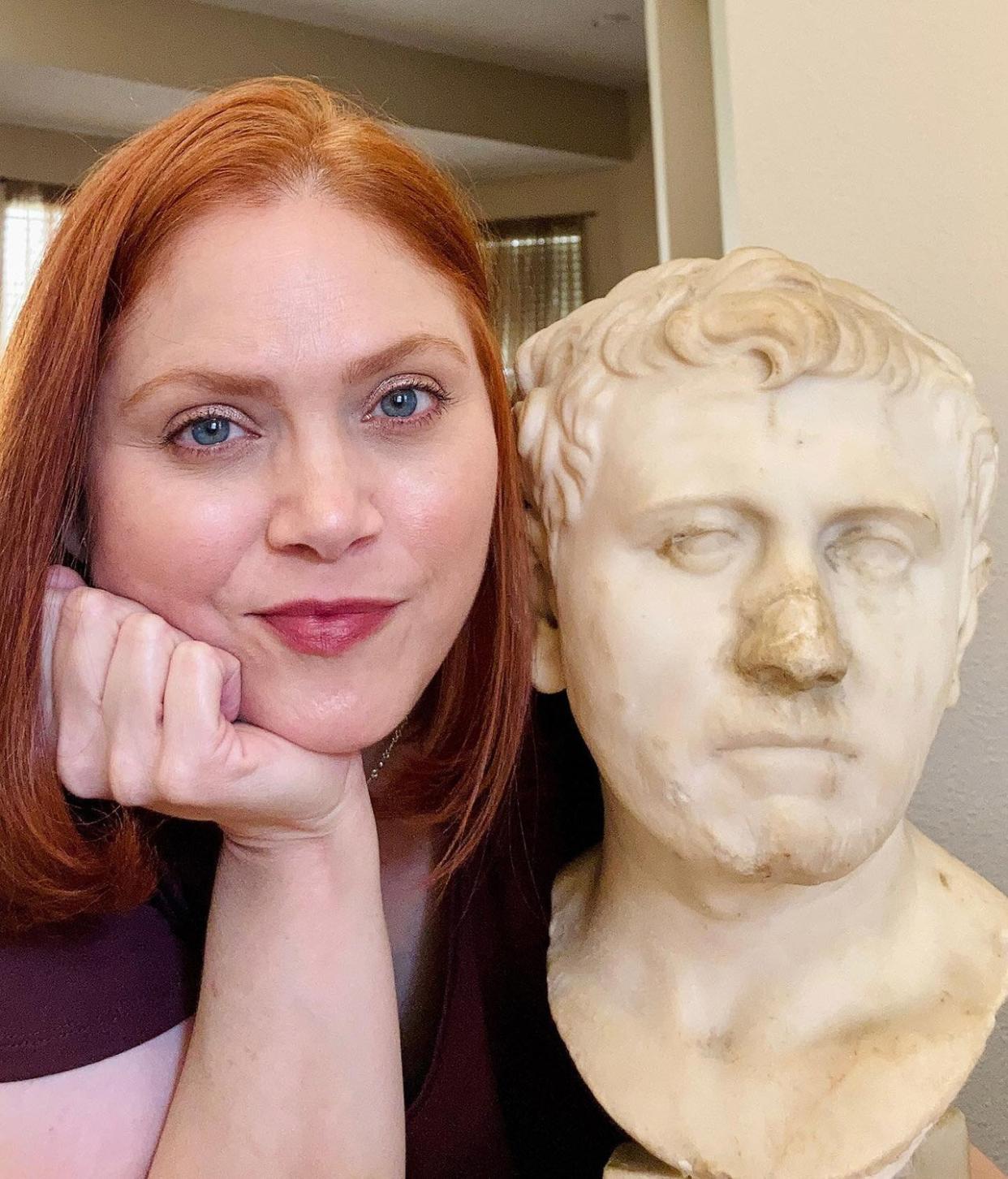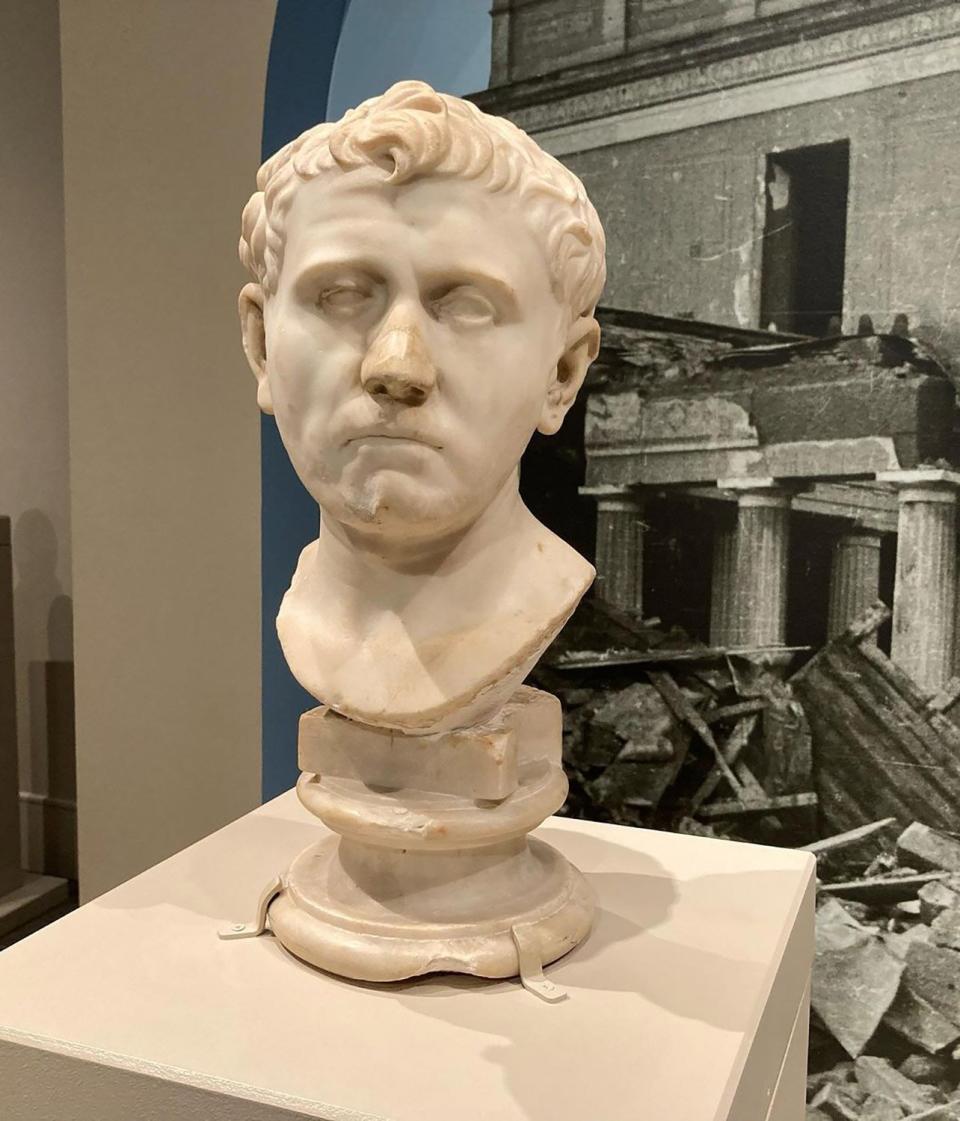Texas Woman Discovers Her Goodwill Purchase Is a Missing Roman Artifact — and Agrees to Return It

courtesy Laura Young
A Texas woman purchased a sculpture from Goodwill for $34.99, only to find it was a missing Roman artifact. Now, a local museum has it on display before it's shipped back to Europe.
Art collector Laura Young came across the 52-pound bust in 2018 while shopping at Goodwill in Austin for items to resell, she told The Art Newspaper.
"I've found a lot of interesting things at Goodwill in the past," she told the publication, noting that it was "on the floor, under a table." She added, "It looked pretty dirty, pretty old."
Young purchased it hoping that someone would eventually buy it from her and said that she "asked some guy who worked [at Goodwill] to carry it to my car," buckling it in a seatbelt for the ride.
Set on finding the sculpture's origin, Young reached out to staff at the classics and arts departments at the University of Texas at Austin and auction houses in the U.S. Sotheby's consultant Jörg Deterling later narrowed down the history of the bust and led Young to authorities in Germany, per the San Antonio Museum of Art (SAMA).

courtesy Laura Young
Young's lawyer, Leila Amineddoleh, helped her settle on a deal that would get the statue to the Bavarian Administration of State-Owned Palaces, Gardens and Lakes in Germany, The Art Newspaper said. Her name will be featured on a plaque upon its return.
But first, it will be on display at the SAMA until May 2023, according to the museum.
"My husband and I were on a road trip when I got an email from Bonhams confirming the head was indeed ancient Roman, but without provenance they could be of no further assistance. Soon after that, Sotheby's got in touch," Young recalled to the museum. "There were a few months of intense excitement after that, but it was bittersweet since I knew I couldn't keep or sell the (bust). Either way, I'm glad I got to be a small part of (its) long and complicated history, and he looked great in the house while I had him."
RELATED: 13-Year-Old Boy Is Set to Start Graduate School This Fall — But He Still Feels Like a 'Regular' Kid
Experts have been able to date the sculpture's history back to World War II. It's suspected to have been stolen from the Pompejanum in Germany when Allied bombers attacked Aschaffenburg in January 1944. King Ludwig I previously led the construction of the Pompejanum, executed by architect Friedrich von Gärtner from 1840 to 1848.
The bust is said to have been in the Pompejanum and is thought to be an homage to one of Pompey the Great's sons. The Roman General lost a civil war to Julius Caesar.
RELATED VIDEO: Two Oklahoma Women Make Shocking DNA Discovery: 'We Were Switched at Birth'
Never miss a story — sign up for PEOPLE's free daily newsletter to stay up-to-date on the best of what PEOPLE has to offer, from juicy celebrity news to compelling human interest stories.
Though the Pompejanum was restored in 1960 and transformed into a museum in 1994, the bust was still missing, the San Antonio Museum of Art said, noting that the U.S. Army was present in Aschaffenburg following World War II until after the Cold War, and it's suspected an American soldier brought the structure to Texas.
"We are very pleased that a piece of Bavarian history that we thought was lost has reappeared and will soon be able to return to its rightful location. We would like to take this opportunity to thank the San Antonio Museum of Art for their support in returning the ancient portrait," said Bernd Schreiber, president of the Bavarian Administration of State-Owned Palaces, Gardens, and Lakes, per the museum.

